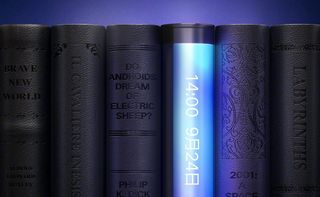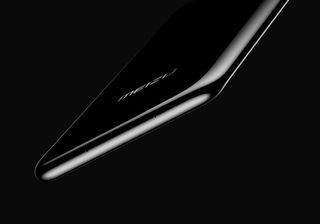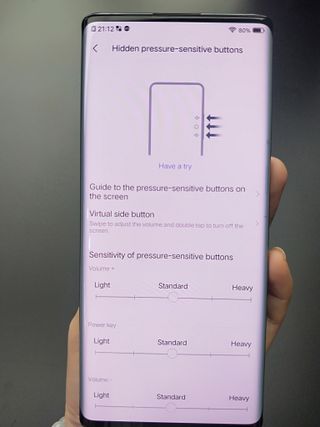First They Took Our Headphone Jack, Now They’re Taking Our Volume Buttons
Buttonless is officially a trend

This is the Xiaomi Mix Alpha. A smartphone that not only has a screen that curves all the way to its back, but is also the latest example of a nascent technological trend: the buttonless phone.
Yeah, they are taking away your buttons after eliminating the keyboard, the home button, and the headphone jack.
Posted by reliable rumorologist Ice Universe, the teaser poster shows the Xiaomi Mix Alpha, a new flagship that will be announced on September 24. It seems to be the successor of the Mi Mix 3, getting rid of the numbering like Samsung is rumored to do in its next Galaxy phone.
It also goes from the waterfall display of the Vivo Nex 3 to a screen that curves all the way to the back of the phone. Ice Universe calls this the “super-curved screen”, the last step before the completely surround screen that wraps all around the phone’s body.
It’s also a design that leaves no space for buttons, which is what has caused the Xiaomi Mix Alpha to ditch them.

You can argue that Google opened the buttonless Pandora’s Box with its Pixel 2 squeezable frame, which could be considered the embryo idea that led to this. The Pixel 2 used sensors placed on the side of the phone to activate functions according to the user’s wish — but Google’s 2017 flagship still had buttons albeit no headphone jack.
True buttonless squeezable edge designs came later this year, when two experimental phones ditched buttons completely in favor of pressure sensitive areas. One was the $1,299 Meizu Zero — a limited edition device that eliminated… well, everything but the screen. The seamless body phone didn’t even have ports and charged exclusively using wireless induction power.
Sign up to get the BEST of Tom's Guide direct to your inbox.
Here at Tom’s Guide our expert editors are committed to bringing you the best news, reviews and guides to help you stay informed and ahead of the curve!

The other one was the Vivo Apex 2019, another limited edition concept phone that ditched all buttons to look like a solid ultra-thin lingot made of liquid mercury.
Those phones didn’t reach the mass market but Vivo took that experience to design its newest flagship: the Vivo Nex 3, a top-of-the-line Snapdragon 855+ phone with a 64MP camera and 120W fast charging technology that has a waterfall display with the same buttonless technology as the Apex 2019.
The Nex 3 uses standard capacitive touch technology for these virtual buttons that are positioned on the waterfall display’s edges. It tries to avoid accidental activation by requiring users to either double click or slide their fingers across the sides. It’s quite pedestrian and not very intuitive but in theory this works about right (we haven’t tried it yet).

However, this edge technology is getting more sophisticated than that. According to Ice Universe, the Huawei Mate 30 Pro released yesterday doesn’t require double-click tricks to work. The manufacturer claims its display has been engineered to avoid any kind of accidental activation using seven additional sensors built right into the display edges. This would — again in theory, we haven’t tested it yet — avoid any kind of accidental touch, the company says.
It’s not clear how the Xiaomi Mix Alpha wrap-around screen would work but, knowing the Chinese company’s technological prowess and its tendency to package everyone’s else inventions in addition to their own, I wouldn’t be surprised if it used similar technology provided by the likes of NDT, the supplier used by HTC on its U11 phone or by Google in the Pixel’s Active Edge technology.
With Vivo, Xiaomi, and Huawei jumping on the buttonless train, it’s only a matter of time before every single Asian manufacturer starts adding this tech to their phones. Even Samsung is working on true bezel-less phones as we speak. Heck, I wouldn’t be surprised if — in a few years — we see an iPhone with no buttons, ports, or edges like the concept below.
What is clear is that there is a clear trend towards enveloping displays that do not leave space for any physical buttons. If phone makers really work out any potential accidental touch issue, I have no problem with that at all.
But no matter what, we will have to cope with the fact that they are taking our buttons away, just like they took the physical keyboard and the headphone jack. And eventually, they will eliminate the screen itself, too. Good luck everyone!
Jesus Diaz founded the new Sploid for Gawker Media after seven years working at Gizmodo, where he helmed the lost-in-a-bar iPhone 4 story and wrote old angry man rants, among other things. He's a creative director, screenwriter, and producer at The Magic Sauce, and currently writes for Fast Company and Tom's Guide.
